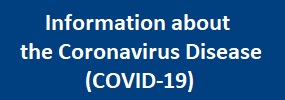| 1)Behcet's disease |
2)multiple sclerosis |
3)myasthenia gravis |
| 4)systemic lupus erythematosus (SLE) |
5)subacute myelo-optic neuropathy (SMON) |
6)aplastic anemia |
| 7)sarcoidosis |
8)amyotrophic lateral sclerosis (ALS) |
9)scleroderma, dermatomyositis or polymyositis |
| 10)idiopathic thrombocytopenic purpura |
11)periarteritis nodosa |
12)ulcerative colitis |
| 13)Takayasu's arteritis |
14)Buerger's disease |
15)pemphigus |
| 16)spinocerebellar degeneration |
17)Crohn's disease |
18)fulminant hepatitis |
| 19)malignant rheumatoid arthritis |
|
|
| 20)diseases related to Parkinson's disease (progressive supranuclear palsy, corticobasal degeneration, Parkinson's disease) |
| 21)amyloidosis |
22)ossification of posterior longitudinal ligament (OPLL) |
23)Huntington's disease |
| 24)moyamoya diesease |
25)Wegener's granulomatosis |
| 26) idiopathic dilated cardiomyopathy(blood congestion type) |
|
|
| 27)multiple system atrophy(striatonigral degeneration, Shy-Drager syndrome group and olivopontocerebellar atrophy) |
| 28)epidermolysis bullosa (junctional and malnutriotional) |
29)pustular psoriasis |
| 30)disseminated spinal canal stenosis |
31)primary biliary cirrhosis |
32)severe acute pancreatitis |
| 33)idiopathic necrosis of the femoral head |
34)mixed connective-tissue disease |
35)primary immunodeficiency syndrome |
| 36)idiopathic interstitial pneumonia |
37)retinitis pigmentosa |
38)prion diseases |
| 39)primary pulmonary hypertension |
40)neurofibromatosis type |
41)subacute sclerosing panencephalitis (SSPE) |
| 42)Budd-Chiari syndrome |
|
| 43)idiopathic chronic pulmonary thromboembolism with pulmonary hypertension |
| 44)lysosomal storage diseases |
45)adrenoleukodystrophy (ALD) |
|
| 46)familial hypercholesterolemia (Homozygous type) |
| 47)spinal muscular atrophy (SMA) |
48)spinal and bulbar muscular atrophy (SBMA) |
49)chronic inflammatory demyelinating polyneuropathy |
| 50)hypertrophic cardiomyopathy |
51)restrictive cardiomyopathy |
52)mitochondrial disease |
| 53)lymphangioleiomyomatosis |
54)severe erythema multiforme (acute phase) |
55)ossification of the ligamentum flavum |
|
56)diencephalo-hypophysial dysfunction (Syndrome of abnormal secretion of prolactin, Syndrome of abnormal secretion of gonadotropin, Syndrome of abnormal secretion of antidiuretic hormone, syndrome of abnormal secretion of thyroid stimulating hormone, cushing disease, acromegaly, hypopituitarism)
|













